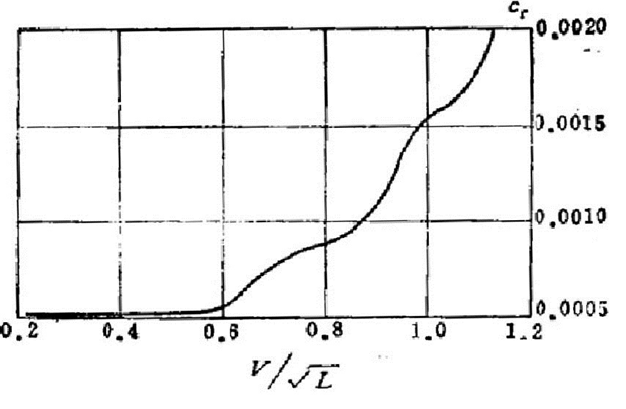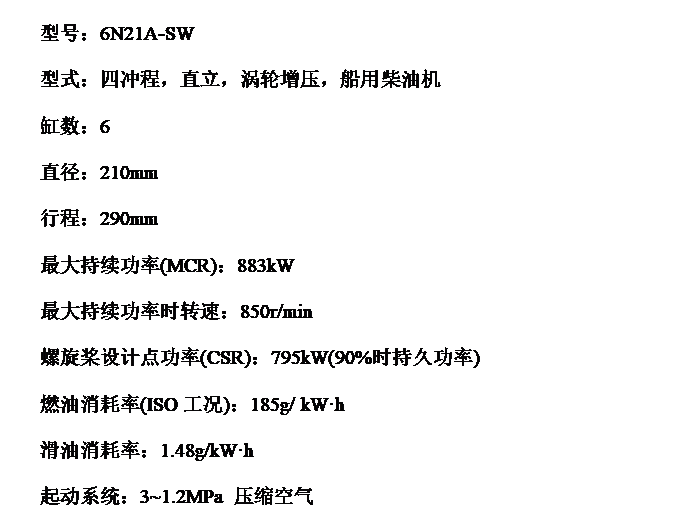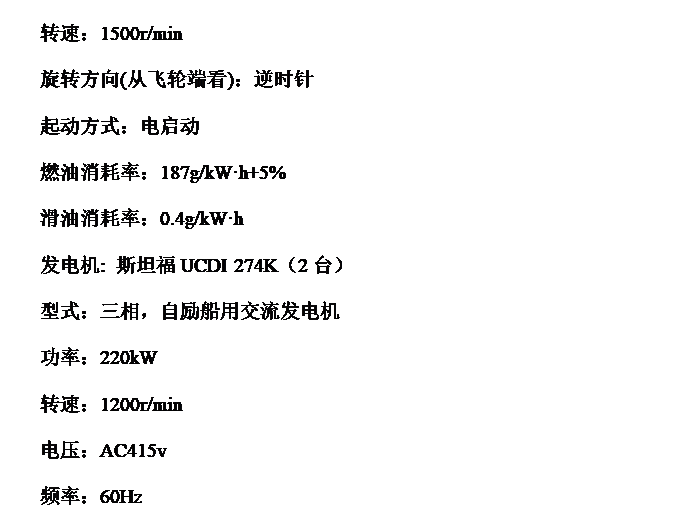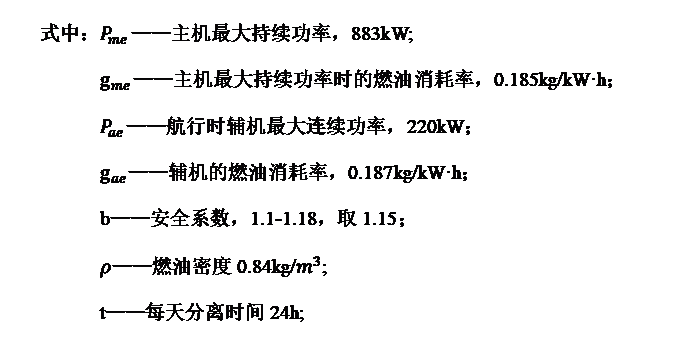4000吨加油船动力装置设计毕业论文
2020-04-09 15:33:43
摘 要
本次我的设计论文对4000吨加油船的主推进装置进行了计算和选型,对主要的机舱设备(各类泵、压缩机等)和船舶管系(燃油、滑油、冷却水等)做了较为详细的分析和选择。由于加油船是新兴船舶品种,资料较少,望本文可为加油船的动力装置的设计和选型给与一点帮助。
船舶所需要的动力主要由船舶的主推进装置来提供,它是船舶最重要的组成部分之一。选择一个大小、重量、价格和油耗率都较为合适的主机可以最大限度的降低船舶的营运成本[1]。主推进装置的功率由船舶在水面或水中航行时受到阻力的大小决定的,船舶的阻力计算有几种主要的方法,其中阻力系数法是根据给定的船舶数据(船舶的主尺度、航速、吨数和续航)来估算船舶受到的总阻力。先用这种方法来计算得出船舶的有效功率[2]。
由于使用阻力系数法中并未考虑船舶的兴波阻力,从而导致所计算得出的功率和实际所需要的功率差别较大,所以我又使用爱尔法来核算船舶有效功率。爱尔法适用于中低速船舶,得出的结论更为接近真实情况[3]。使用爱尔法需要知道船舶实际的方形系数,船舶的主尺度和航速等船舶数据,以此来计算得出傅汝德数,根据傅汝德数查表可以得到标准的修正系数和方形系数,然后对其进行方形系数修正、B/T修正和长度修正,计算可以得出船舶所需功率,并将其作为选择主机的功率的标准。
在我计算得到了船舶的有效功率后,根据母型船舶的方形系数计算出所需的有关的数据,然后对主推进装置进行初步匹配和终结匹配设计以用来作为主机选型的原则。
在我确定了主机和螺旋桨的型号后,对机舱设备(燃油系统、滑油系统、冷却水系统、压缩空气系统、舱底水系统、压载水系统、水消防系统、机舱CO2系统、机舱通风系统、生活水系统)进行了逐一的计算,根据核算的数据来选择所需的设备(沉淀柜、日用柜、运输泵、空气瓶和空压机等)[4]。然后我根据选择确定了的主机和辅机以及应急发电机的数据来作为管系设计的依据和标准。最后我使用CAD绘制4000吨加油船的图纸。
结论:在老师的指导下,完成了4000吨加油船的动力装置的选型设计和机舱设备的分析选择。
关键字:加油船;主推进装置;机舱设备;管系计算
Abstract
This time, my design paper has calculated and selected the main propulsion unit of the 4,000-ton tanker. The main engine room equipment (types of pumps, compressors, etc.) and ship piping (fuel, lubricating oil, cooling water, etc.) were analyzed and selected in more detail. Since the bunkering vessel is a new type of ship and there are few data, it is hoped that this article can provide some help for the design and selection of the power plant of the bunkering vessel.
The power required by the ship is mainly provided by the ship's main propulsion unit, which is one of the most important components of the ship. Choosing a main engine with appropriate size, weight, price and fuel consumption can minimize the operating cost of the ship. The power of the main propulsion unit is determined by the resistance of the ship when it is sailing on the water or in the water. There are several main methods for calculating the resistance of a ship. The drag coefficient method is based on the given ship data (the ship’s main scale, speed, Tonnage and Endurance) to estimate the total resistance to the ship. First use this method to calculate the effective power of the ship.
Since the resistance-to-wave resistance of the ship is not taken into account in using the drag coefficient method, resulting in a large difference between the calculated power and the actual required power, I have also used the Alpha method to calculate the effective power of the ship. The Alpha method is suitable for medium and low speed ships and the conclusion reached is closer to the real situation. Using the Alpha method requires knowing the ship's actual block coefficient, ship's main scale and speed, and other vessel data, in order to calculate the number of Fu's numbers. According to the Fu's number table, the standard correction factor and block coefficient can be obtained, and then block coefficient correction, B/T correction and length correction are calculated and the required power of the ship can be calculated and used as the standard for selecting the power of the main engine.
After I calculated the effective power of the ship, I calculated the necessary data based on the block coefficient of the parent ship, and then performed a preliminary matching and termination matching design on the main propulsion device to be used as the principle of main engine selection.
After I determined the model of the main engine and propeller, the equipment in engine room (fuel system, oil system, cooling water system, compressed air system, bilge water system, ballast water system, water fire protection system, engine room CO2 system, engine room ventilation system, and living water system were calculated one by one, and the required equipment (deposition cabinets, daily-use cabinets, transport pumps, air bottles, air compressors, etc.) were selected based on the accounting data . Then I used the data of the selected main engine and auxiliary engines and emergency generators as the basis and criteria for piping design. Finally, I used CAD to draw the drawings of the 4,000-ton bunkering vessel.
Conclusion: Under the guidance of the teacher, the selection and design of the power plant of the 4000-ton bunkering vessel and the analysis and selection of the cabin equipment were completed.
Key Words: Bunkering vessel; Main propulsion unit; Equipment in engine room; Piping calculation
目录
第1章 绪论 1
1.1 船型 1
1.2 船舶主要尺度 1
1.3 航速 1
1.4 燃油种类 1
第2章 主机选型论证 2
2.1 船舶有效功率计算 2
2.1.1 使用阻力系数法计算船舶有效功率 2
2.1.2 使用爱尔法计算船舶有效功率 5
2.2 机桨匹配计算 9
2.2.1 初步匹配计算 9
2.2.2 主机选型 12
2.2.3 终结匹配设计 13
2.3 功率计算结论 14
第3章 机舱设备计算选型 15
3.0 主机、辅机以及应急发电机组 15
3.0.1 主机(2台) 15
3.0.2 柴油发电机组(2组) 15
3.0.3 应急柴油发电机组 16
3.1 燃油系统 18
3.1.1 主机耗油量 18
3.1.2 辅机耗油量 18
3.1.3 燃油消耗量 19
3.1.4 油舱容积 19
3.1.5 日用油柜容积 19
3.1.6 油渣柜容积 20
3.1.7 污油柜容积 20
3.1.8 主机燃油供给泵相关计算 20
3.1.9 辅机燃油供给泵 21
3.1.10 燃油输送泵的相关计算 21
3.1.11燃油分油机排量 22
3.2 滑油系统 23
3.2.1 滑油分油机 23
3.2.2 主机滑油相关计算 23
3.2.3 辅机滑油相关计算 23
3.2.4 主机滑油循环泵 24
3.2.5 主机滑油循环舱 25
3.2.6滑油储存舱的容积 25
3.2.7 滑油沉淀舱 26
3.2.8 滑油污油柜 26
3.2.9 油渣柜 26
3.2.10 滑油输送泵 26
3.3 冷却水系统 27
3.3.1 主机膨胀水箱相关计算 27
3.3.2 冷却水泵 27
3.4 压缩空气系统 29
3.4.1 启动空气瓶的相关计算 29
3.4.2 空压机 30
3.4.3 杂用空气瓶 31
3.4.4 汽笛空气瓶 31
3.4.5 日用空气瓶 31
3.5 舱底水系统 31
3.5.1 舱底水泵的相关计算 31
3.5.2机舱处舱底水支管 33
3.5.3 舱底油水分离器 33
3.6 压载水系统 34
3.6.1 压载水泵 34
3.7 水消防系统 35
3.7.1 消防泵选型 35
3.7.2 应急消防泵 36
3.7.3 消防总管管径 36
3.7.4 CO2灭火系统 36
3.8 生活水系统 38
3.8.1 淡水压力柜容积 38
3.8.2 生活水泵排量计算 39
3.8.3 海水压力柜 41
3.8.4 压力柜供水泵排量及压头计算 42
3.8.5 生活污水处理装置 44
3.9 机舱通风系统 44
3.9.1 机舱通风机的排量 44
3.9.2 机舱通风机的压头 46
3.9.3 机舱送风机的选型 46
3.10 本章小结 47
第4章 轮机说明书 48
4.1 概述 48
4.2 主机 48
4.3 辅机 49
4.3.1 柴油机发电机组 49
4.3.2 应急柴油机发电机组 50
4.4 辅助设备 51
4.4.1泵 51
4.4.2 空气压缩机 55
4.4.3 离心分离机 56
4.4.4 机舱风机 57
4.4.5 空气瓶及压力水柜 57
4.4.6 环保设备 58
4.4.7 其他设备 58
4.4.8 机修设备 59
4.5 系统及机舱布置 60
4.5.1 海水冷却系统 60
4.5.2 淡水冷却系统 60
4.5.3 燃油系统 60
4.5.4 滑油系统 61
4.5.5 主机空气压缩系统 61
4.5.6 排气系统 62
4.5.7 机舱通风系统 62
4.5.8 舱底泵及管系 62
4.5.9 压载水系统 62
4.5.10 淡水系统 62
4.5.11 卫生水系统 62
4.5.12 污水系统 63
4.5.13 机舱舱底水处理系统 63
4.5.14 舱底水系统 63
4.5.15 压载水系统 63
4.5.16 消防系统 63
4.6 本章小结 63
第5章 轮机设备明细表 64
第6章 结束语 67
参考文献 68
致谢 69
第1章 绪论
1.1 船型
本次设计为4000吨加油船,为了提高船舶的操纵性能,我选择双机双桨作为推进装置。加油的船型一般为艉机型单层甲板船[5]。
1.2 船舶主要尺度
总 长:89.90m
垂线间长:87.00m
型 宽:15.00m
型 深:7.60m
设计吃水:5.70m
结构吃水:5.80m
设计装载量:4000t
船员人数:15人
1.3 航速
航速:11kn,续航力:3700海里。
1.4 燃油种类
主机使用40sec/38℃的柴油[6]。
第2章 主机选型论证
对于绝大多数船舶而言,动力装置都是船舶建造、运营、维修中最重要的部分,它和它的配套设备数量多、材料要求高,使用频率高,所以我们要选择一个最合适的主机来达到最好的经济性。
本次设计的是一艘4000吨的加油船,它属于小型低速船舶,主要在近海使用[7]。在主机选型过程中以下几个方面要被着重考虑。
1)主机的重量和尺寸,主机的重量的大小将会影响到船舶可以承载多少货物(主机重量大,相应的载重量就不会很高),主机的尺寸大小将会影响到机舱剩余空间的大小(主机尺寸大,其他机舱设备可以选择的安置空间就会变小),这些对于船舶营运的经济性起决定性作用。
2)主机的功率和转速,本次设计我选用的是中速机,转速除以齿轮箱的减速比就是螺旋桨的转速,因为螺旋桨的转速较小时效率较高,所以主机要求在满足功率后,转速要低。
3)使用燃油和滑油,它们是每条船舶上都需要使用的必备品,如果主机使用燃油和滑油的效率较高,那么就可以显著提高船舶航行的经济性[8]。
4)主机的价格,使用年限及维修的难易程度,在绝大多数船舶中,船舶动力装置可以在船舶总价中占有重要的一部分,而且它还影响配套的机械设备的价格和数量。主机使用的时间越长,平均价格就越低,维修简单也会大幅度降低船舶航行的后续成本。
5)主机的振动和噪声,很显然,如果主机想要降低机械振动,就要拥有一个良好的平衡性,这样主机产生的噪声也会同步变小。
6)柴油机的热效率和燃油消耗率,这两种指标可以用来判断柴油机整体的好坏,主要影响船舶在航行时的经济性以及柴油机可以使用的年限。
2.1 船舶有效功率计算
我先使用根据船舶总阻力来计算船舶有效功率的阻力系数法;然后使用经验公式方法中的爱尔法来计算船舶有效功率,对于两种方法得出的结果,分析比较选取一个较为合适的值。
2.1.1 使用阻力系数法计算船舶有效功率
首先使用阻力系数法计算船舶的总阻力,根据必要参考资料《船舶原理(上)》[2]中P180有关阻力的部分,可以得出,首先需要计算雷洛数,,其中Lwl为水线长(m),v是船速(m/s),μ是水的运动粘性系数,如无特殊说明,对于实船取标准水温t=15℃时之值, m2/s。
根据《船舶原理(上)》[2]中P168的公式:
(2.1)
式中:——摩擦阻力系数;
——雷诺数;
根据《船舶原理(上)》[2]中P180的公式:
(2.2)
式中:——粗糙补贴;
根据上述计算结果,查下图得到剩余阻力系数:

以上是毕业论文大纲或资料介绍,该课题完整毕业论文、开题报告、任务书、程序设计、图纸设计等资料请添加微信获取,微信号:bysjorg。
相关图片展示:







课题毕业论文、开题报告、任务书、外文翻译、程序设计、图纸设计等资料可联系客服协助查找。



